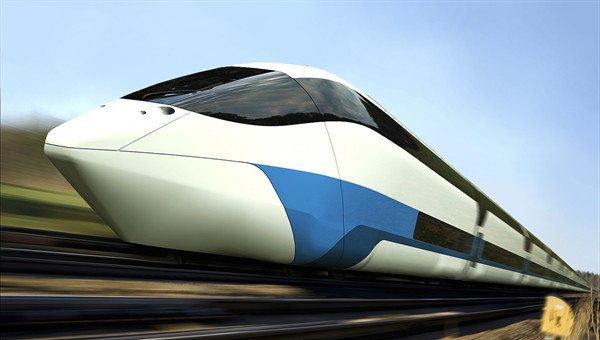RAWIS: The Next Generation of Automated Inspection Systems for Railway Wheels

Next Generation Train DLR
Railway wheels are exposed to great dynamic stress. For this reason, they need to be subjected to non-destructive testing during the manufacturing process with the aim of detecting material flaws that may have been caused during manufacture.
In accordance with the current state of technology, the testing is carried out using automated inspection systems.
The challenge was to design a system which guarantees a sensitivity of FBH 1 mm, a dead zone of 5 mm beneath the test surfaces and a cycle time between 60 to 90 seconds.
This makes high demands on the ultrasonic inspection technology. To reduce the mechanical outlay, allow optimum coverage of the prescribed inspection areas and enable flexible configuration of the inspection technology with regard to the wide range of different wheel geometries, phased array probes are used for the inspection of the wheel rim and wheel hub, whilst squirter probes guided by robots are used for the inspection of the discs.
In order to be able to cover the prescribed inspection areas when the beam is being directed into the rim axially and radially and into the hub from both sides for all the wheel types occurring at the manufacturer's works, phased array probes designed specially for this inspection problem, with 64 and 128 elements (linear arrays), have been developed.
In the case of the hub in particular, the challenge consisted in finding a suitable configuration of the phased array probes, in order at the same time to cater to both the small dead zone and the large inspection area of up to 300 mm within a single test cycle.
It was also necessary to develop a suitable probe carrier which would make constant coupling possible through a water gap in spite of the large active aperture of the probes.
In wheel requalification, examination of the disc is also required. Here the challenge involves recording the geometry, which may be complex, and then carrying out the inspection.
Contoured wheel discs in particular make it more difficult to determine the contour data and carry out the ultrasonic inspection, and call for solutions that are sophisticated in terms of the inspection technology they use. This paper aims to provide an introduction to robot-aided contour recording and ultrasonic testing using squirter probes.
Weitere Informationen:
Media Contact
All latest news from the category: Materials Sciences
Materials management deals with the research, development, manufacturing and processing of raw and industrial materials. Key aspects here are biological and medical issues, which play an increasingly important role in this field.
innovations-report offers in-depth articles related to the development and application of materials and the structure and properties of new materials.
Newest articles

Silicon Carbide Innovation Alliance to drive industrial-scale semiconductor work
Known for its ability to withstand extreme environments and high voltages, silicon carbide (SiC) is a semiconducting material made up of silicon and carbon atoms arranged into crystals that is…

New SPECT/CT technique shows impressive biomarker identification
…offers increased access for prostate cancer patients. A novel SPECT/CT acquisition method can accurately detect radiopharmaceutical biodistribution in a convenient manner for prostate cancer patients, opening the door for more…

How 3D printers can give robots a soft touch
Soft skin coverings and touch sensors have emerged as a promising feature for robots that are both safer and more intuitive for human interaction, but they are expensive and difficult…





















